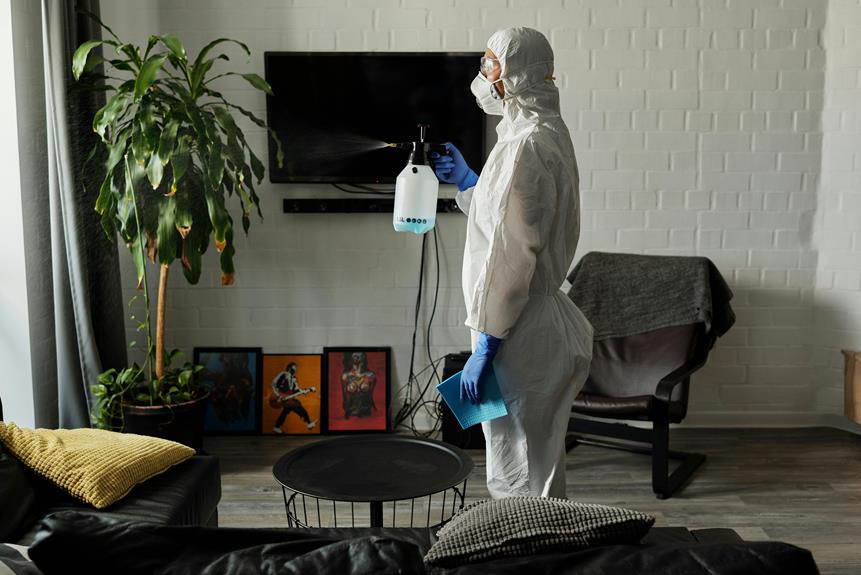Have you asked yourself: Why do I keep losing channels on my smart TV? You’re losing channels on your smart TV due to several potential issues.
Signal interference from nearby devices like Wi-Fi routers can disrupt channels, so try repositioning or switching off unused gadgets.
Check for transmitter faults and use tools like Freeview for updates. An incomplete retuning after software updates might also be the culprit; manually retune your TV to fix it.
Inspect all cables and connections to make sure they’re secure and undamaged. Finally, check for area maintenance or transmitter updates using Freeview Channel Checker.
By identifying the root cause, you can take steps to restore your channels and enjoy uninterrupted viewing.
Key Information
- Signal interference from nearby electronic devices can cause pixelation, freezing, or channel loss.
- Transmitter faults in your area may disrupt signal and cause sudden channel loss.
- Incomplete retuning after software updates can result in missing channels.
- Loose or damaged equipment connections may affect signal reception and lead to channel loss.
- Planned area maintenance or transmitter updates can temporarily disrupt your channel reception.
Signal Interference
When you’re experiencing pixelation, freezing, or losing channels on your smart TV, signal interference from nearby electronic devices is often the culprit.
Common sources include mobile phones, Wi-Fi routers, and other wireless gadgets.
To troubleshoot, start by confirming that your TV antenna is positioned correctly and isn’t obstructed.
If the issue persists, consider using a signal filter designed to block interference. Make sure that these devices are relocated away from your TV.
Sometimes, simply switching off unused electronic devices can greatly improve signal quality.
If you continue to face issues, contacting a professional for tailored advice on minimising interference might be necessary.
These steps should help in restoring your TV channels and enhancing your viewing experience.
Transmitter Faults
Experiencing a sudden loss of channels on your smart TV might be due to transmitter faults. These faults are often caused by technical issues, routine maintenance, or unexpected signal disruptions.
To check for transmitter faults, use Freeview tools or contact your service provider for updates on any ongoing issues. If faults are confirmed, they can have a substantial impact on channel reception.
Start by ensuring your antenna is correctly aligned and in good condition. Perform a signal strength check in your TV’s settings menu.
If problems persist, note the specific channels affected and report this to your provider for further assistance.
Addressing these faults promptly can help restore your missing channels and improve overall reception quality.
Incomplete Retuning
Incomplete retuning after software updates can often be the culprit behind missing channels on your smart TV, necessitating you to manually retune to restore full functionality.
After an update, your TV mightn’t automatically retune all channels correctly.
Check for notifications prompting retuning and follow them meticulously. If you didn’t get a notification, go to your TV’s menu settings and select the manual retuning option.
Follow the step-by-step instructions typically provided in the user manual or on-screen prompts. This process guarantees your TV scans and saves all available channels.
If you still experience issues, contact the manufacturer or retailer for specific guidance. Completing this procedure meticulously can prevent the loss of channels and improve your viewing experience.
Equipment and Connections
After confirming that your TV is correctly retuned, the next step is to thoroughly inspect all equipment and connections to rule out any physical issues causing channel loss.
Start by checking that your TV is properly plugged in and the remote has working batteries. Securely attach all power cables, HDMI cables, and aerial connections.
Look for any worn or damaged cables that might affect signal reception.
Confirm internet cables are securely plugged in or validate a stable Wi-Fi connection.
Verify all necessary items for Freeview TV or set-top box operation are in place.
Inspect all connections for any loose or insecure attachments.
Following these steps can often resolve channel loss issues linked to equipment and connectivity.
Area Maintenance Issues
Check for planned maintenance or transmitter faults in your area using tools like the Freeview Channel Checker to make sure your signal isn’t being disrupted by external factors.
Enter your postcode and house details to see if there are any ongoing issues affecting your channels.
If maintenance is confirmed, follow the guidance provided on the maintenance page. Sometimes, no information might be available, in which case, return to the maintenance page for updates.
Confirm that your aerial is properly aligned and capable of receiving all available channels despite the ongoing maintenance activities.
This step helps you rule out external disruptions as the cause of losing channels on your smart TV.
Regular Checks and Maintenance
Maintaining peak performance and uninterrupted viewing on your smart TV requires regular checks and maintenance to detect and resolve potential issues promptly.
Start by conducting regular channel scans to confirm all channels are detected. This helps to keep your channel list up-to-date.
Also, check for software updates that may enhance channel reception and stability. Software improvements often include crucial fixes.
Inspect TV aerial and cables: Look for wear and tear that might cause signal loss.
Monitor environmental factors: New buildings or structures can impact your signal strength.
Consider a signal booster: Enhance quality and reliability with a booster or filter.
Frequently Asked Questions
Why Do I Have to Keep Retuning My Smart TV?
You’ve got to keep retuning your smart TV because broadcast frequencies and channel lineups change. Retuning guarantees your TV stays aligned with the correct transmitter and frequencies, giving you access to all available channels with the best signal quality.
Why Have I Lost Some Channels on My Smart TV?
You may have lost some channels on your smart TV due to bad weather, changes in provider lineups, incorrect settings, or maintenance. Check your connections, perform a channel scan, or contact your provider for assistance.
What Causes TV Channels to Disappear?
You might lose TV channels due to bad weather, technical issues, or changes in the provider’s lineup. Incorrect settings or temporary maintenance can also cause this. Try performing a channel scan or re-tune to fix it.
Why Does My Freeview TV Keep Losing Channels?
Your Freeview TV keeps losing channels due to factors like weak signal strength, outdated software, or interference. Perform a channel scan, check antenna alignment, make sure connections are secure, and update your TV’s firmware for better reception.
Conclusion
In conclusion, losing channels on your smart TV can result from signal interference, transmitter faults, or incomplete retuning.
Double-check your equipment and connections, and stay informed about area maintenance issues.
Regularly retuning and maintaining your TV setup can prevent these disruptions. By systematically troubleshooting each potential cause, you’ll guarantee a more stable viewing experience.
Don’t forget routine checks to keep your smart TV performing at its best.


